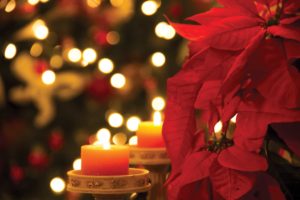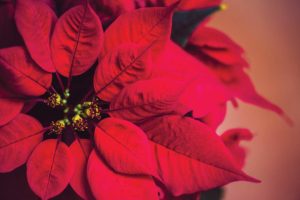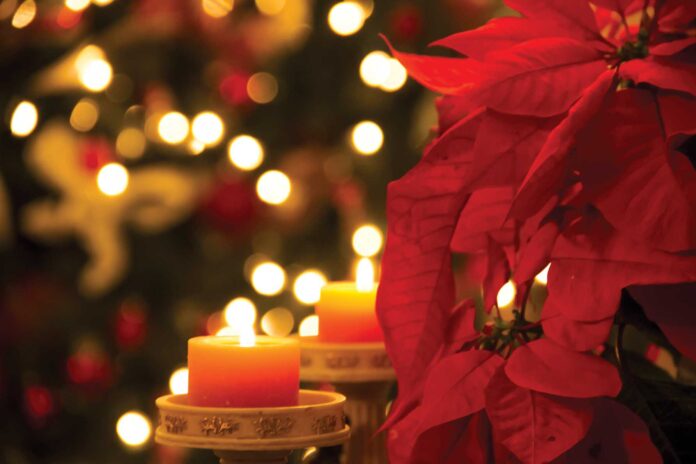One of the joys of my Christmas season is gazing
O at the sea of red that dominates huge areas in so manystores as retailers tempt us to take home a red poinsettia of our very own. Introduced to the United States in 1828 by Joel Roberts Poinsett, our first ambassador to Mexico, the flower has become a big part of our Christmas culture. But how can we know which pot to select?
And how do we keep it from losing leaves once we have it home? A little understanding of the flower’s composition can help us choose a plant that will give us a great deal of pleasure during the holidays and, living in the Valley, many subsequent years of enjoyment.
First of all, check the soil moisture. The plants shouldn’t be so dry that they are wilting, nor should they be in soupy saturated soil. If you don’t want to stick your finger in the dirt, pick up a few different plants. The lighter the pot, the dryer the soil.
It should be noted that a good watering can help wilted plants considerably, but they don’t always look as good as they might have without trauma, so, avoid plants that seem too light or too heavy.
The condition of the leaves is another clue. Most healthy poinsettias have dark green leaves with even coloration.


Poinsettias with yellowing leaves, leaves with brown tips, or leaves with brown edges won’t last as long when you bring them home. Similarly, if you leave the plant in your car it will have big temperature swings. Going from hot tocold to hot again may cause the plant to lose its leaves.
The big test is seeing how far along the plant is in its blooming cycle, and that involves a very close look. The showy colored parts of poinsettias that most people think of as flowers are actually modified leaves known as bracts. The yellow flowers or cyathiaare in the center of the colorful bracts. The plant will drop its leaves and bracts soon after these flowers shed their pollen.
So, for the longest lasting poinsettias, choose plants with little or no yellow pollen showing. The freshest plants won’t be blooming yet, so the flowers will not be yellow but will be little rounded green buds. If the yellow flowers look like they’re producing powdery yellow pollen — or they have started to turn brown — the plant is already past its prime.
Red is the predominant color of the present-day poinsettia, just as it was when it was first discovered in Mexico. But today cultivars may be found in a wide array of colors that include white, pink, andother combinations.
Here are a few things you can do to preserve their long-lasting color display.
Place the plants where the flowers will last longest. They prefer cool temperature and no wind, so keep them away from the heat or air conditioning vents. Really warm temperatures can cause them to mature too quickly, and drafts can dry them out and cause them to drop their leaves. Keep your plant away from animals, small children, or heavily used traffic areas as they are easily damaged. Also keep your plant away from hot or drying things like televisions, heaters, stoves, and fireplaces. Poinsettias keep their bright colors longer if they are kept at 60 to 72 degrees F. If you have the time, putting yourplant outside at night, protected from breezes, frost and wind, is an excellent practice.
Give your plants some natural light — the more the better.
Direct sunlight is not necessary, and too much direct sunlight through a window can burn the leaves, so just a bright sunny room is best.
Like other plants, the Poinsettia will look its best if you don’t allow it to wilt and if you don’t encourage root rot. Water your plants only when the soil is dry to the touch, and be careful not to let your plant stand in water after watering, even for as little as one hour, as this will cause the leaves to turn yellow and drop off.
Loaded with color and available everywhere, poinsettias are an easy way to decorate your home with holiday spirit. And living in the Valley allows us to move them outside after Christmas where we can enjoy them for years. (After Christmas, I’ll be writing about how to grow your Poinsettia out of doors either in pots or in the ground.)




